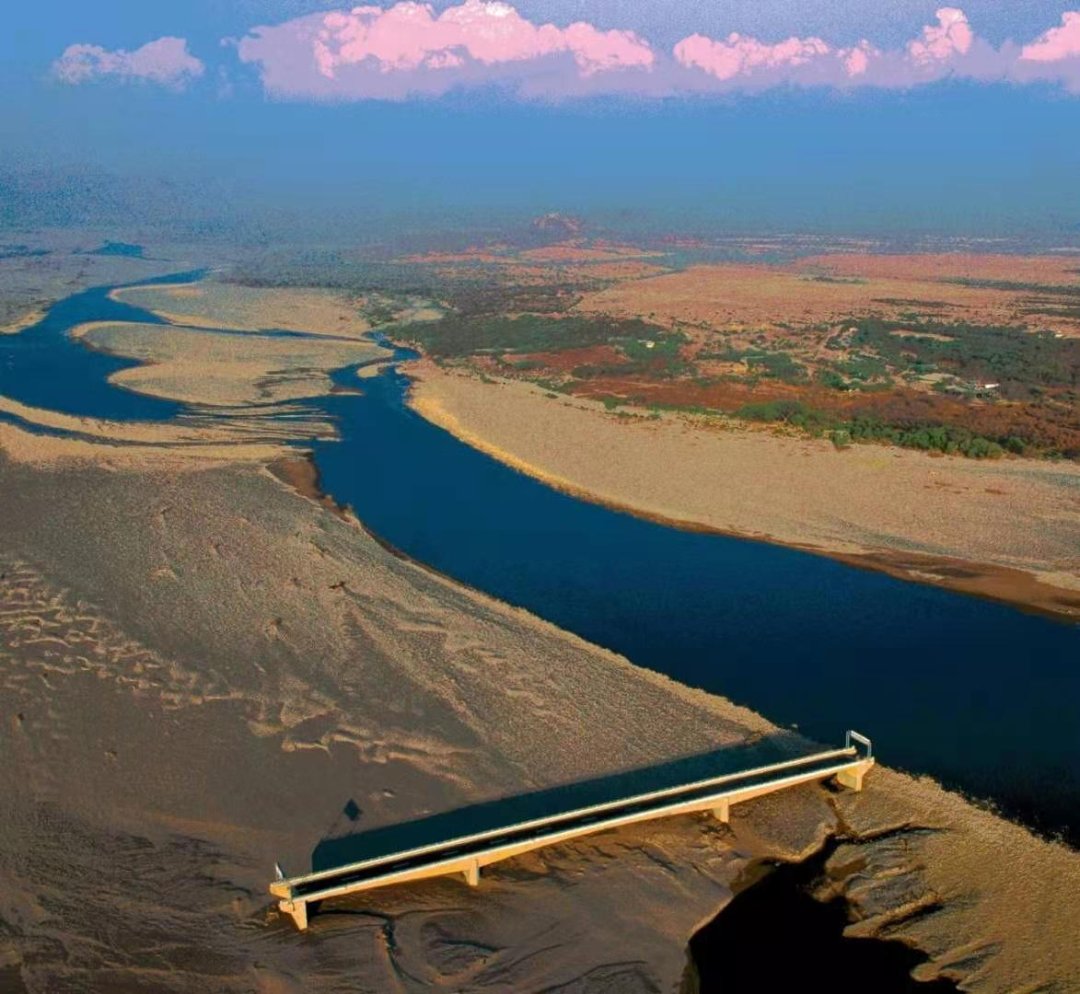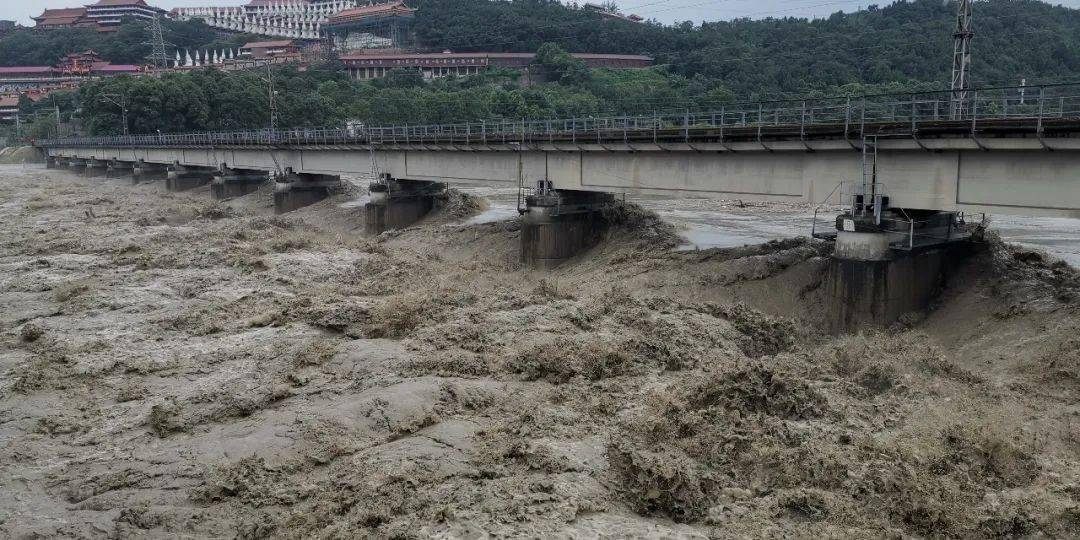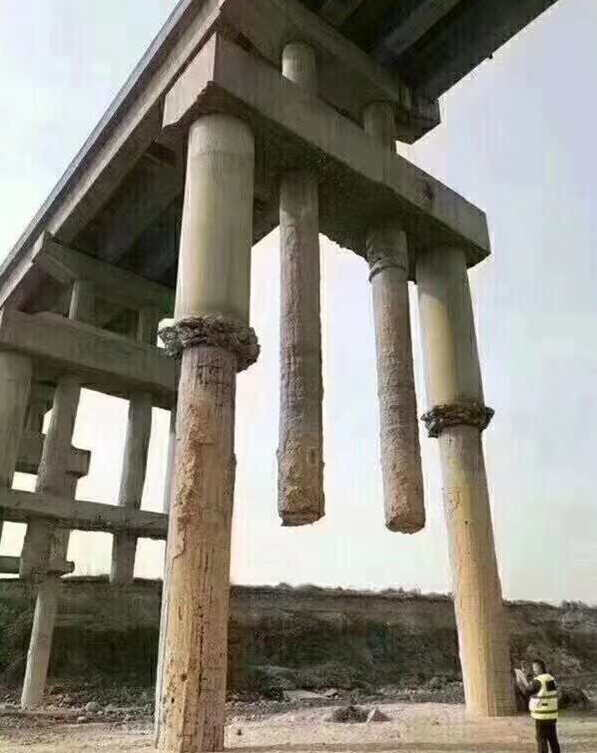The main causes of bridge water damage include: improper bridge location selection, insufficient bridge span diameter, shallow foundation embedding, imperfect diversion and protection, and untimely bridge maintenance. Furthermore, excessive sand mining and river channel alterations can also lead to bridge water damage.
Bridge and culvert locations should generally be set in river sections that are straight, stable, and relatively narrow. However, some bridge and culvert locations that suffer from water damage are selected in river bends or in unfavorable bridge locations. The improper selection of the bridge location may be due to the route selection, or the inability to find a better location due to terrain reasons, or the original selected location was originally in an excellent straight river section, but due to river channel changes (as shown in Figure 1), a bridge and culvert location that is not conducive to smooth drainage and sediment transport is formed. This inappropriate site selection creates a large skew angle between the water flow and the bridge and culvert axis, increasing the water-blocking width and intensifying local scouring.

Figure 1 River channel change phenomenon
The design of the bridge and culvert aperture should meet the requirements of water discharge, sediment transport, and water flow passage. If the aperture design is too small, the water discharge and sediment transport will not be smooth, leading to a large amount of backwater in front of the bridge and intensified scouring under the bridge (as shown in Figure 2). On rivers with a large sediment content, the bridge and culvert apertures may be completely silted up by sediment, leading to further damage to the bridges and culverts.

Figure 2 Bridge water damage caused by small aperture
The embedding depth of the bridge and culvert foundation is determined by the scour depth and the bearing capacity of the foundation. When the precipitation increases and the water flow velocity accelerates, the scour depth will continue to increase, resulting in a relatively reduced foundation embedding depth (as shown in Figure 3). Once a flood comes, the sediment near the bridge pier and abutment foundation is easily washed away by the water flow, resulting in the bridge being overturned.

Figure 3 Scour causes insufficient depth of bridge foundation
Determining the maximum scour depth of the bridge is crucial for determining the foundation embedding depth accurately. Therefore, in bridge design, it is crucial to take into account the local hydrological and geological conditions, conduct thorough on-site investigations, and make extensive use of various methods and technologies to ensure the accuracy of the scour depth, ensuring the safety and reliability of the bridge design.
(4) Imperfect Diversion and Protection
Bridge openings and regulating structures are important components of a complete water drainage system, and both are indispensable. Currently, the total or partial damage of most bridges is attributed to the lack of diversion facilities or poor diversion, which fails to effectively cooperate with the bridge openings to form a water drainage system. Bridges that are destroyed by debris flows due to poor diversion, revetment, and riverbed regulation are even more common. Therefore, it is necessary to rationally arrange regulating structures, such as diversion dikes and check dams, in combination with hydrological, topographic, and geological conditions to ensure that the water flow passes through the bridge openings evenly and smoothly, prevent unfavorable deformations of the riverbed and riverbank near the bridge location, and ensure the normal use of the bridge piers and abutments and the approach embankments at the bridge ends.
(5) Untimely Bridge Maintenance
Due to limited maintenance funds or insufficient expenses, minor damages to some bridge cone slopes and protective works (such as settlement, pavement detachment, and siltation at the culvert entrance) have not been promptly addressed, resulting in the inability to withstand the flood attack when the flood comes, causing further damage to the cone slopes and protective works, and ultimately causing partial collapse of the bridge and culvert.
(6) Excessive Sand Mining
The excessive sand and stone mining in the river channel will change the natural state of the riverbed and cause the riverbed surface to drop. When a flood comes, it will cause local water drops or sharp bends, causing local riverbed scouring and leading to the occurrence of water damage. Typical forms of bridge water damage include insufficient embedding depth of the pier and abutment foundation. If the bridge uses an enlarged foundation, the pier and abutment will be washed away; if a pile foundation is used, the foundation will be exposed.
(7) River Channel Alterations
The reasons for river channel alterations are mainly divided into the changes of the river itself, environmental changes, and human factors. The changes of the river itself are manifested as bank collapses and shore collapses, resulting in the swing of the main stream of the river and the deepening and widening of the riverbed. When the environment in the upstream of the river changes, for example, the forests and vegetation in the upstream basin are deforested, the shaping effect of the river will also change. The human impact on the river channel mainly includes the construction of building facilities near the river, the construction of dams to block water in the upstream of the bridge, and the alteration of water conservancy projects in the upstream and downstream of the bridge. These changes will alter the runoff distribution of the river and increase the scouring capacity of the water flow. Typical forms of bridge water damage include the breakage of the approach embankment at the bridge head, the destruction of the regulating and protective facilities such as the bridge cone slope, resulting in the washing away of the pier and abutment. In addition, after the building facilities near the river are washed away, a large number of floating objects will also cause great harm to the superstructure of the bridge.
To Wrap Up
Bridge water damage is diverse in types and complex in causes, involving various factors such as design, construction, maintenance, and environmental changes. Specific prevention and control measures should be taken according to the characteristics of the actual bridge. In the bridge survey and design stage, the characteristics of the river should be fully understood and planned rationally, and a reasonable bridge type and bridge span layout should be adopted to cross the river to avoid the occurrence of water damage as much as possible. For bridge water damage caused by excessive sand mining and river channel alterations, monitoring and protection should be strengthened, and water prevention plans should be formulated and practiced in a timely manner. In addition, for bridges and culverts that are greatly affected by the water season, a real-time monitoring and early warning system for water damage can be established for detection to ensure the water control safety of the bridge.

International Department: Room 2211-2212, Tower C of Wanda Plaza, Tongzhou District, Beijing 101118, China.
+86-13021287080
info@boyoun.cn